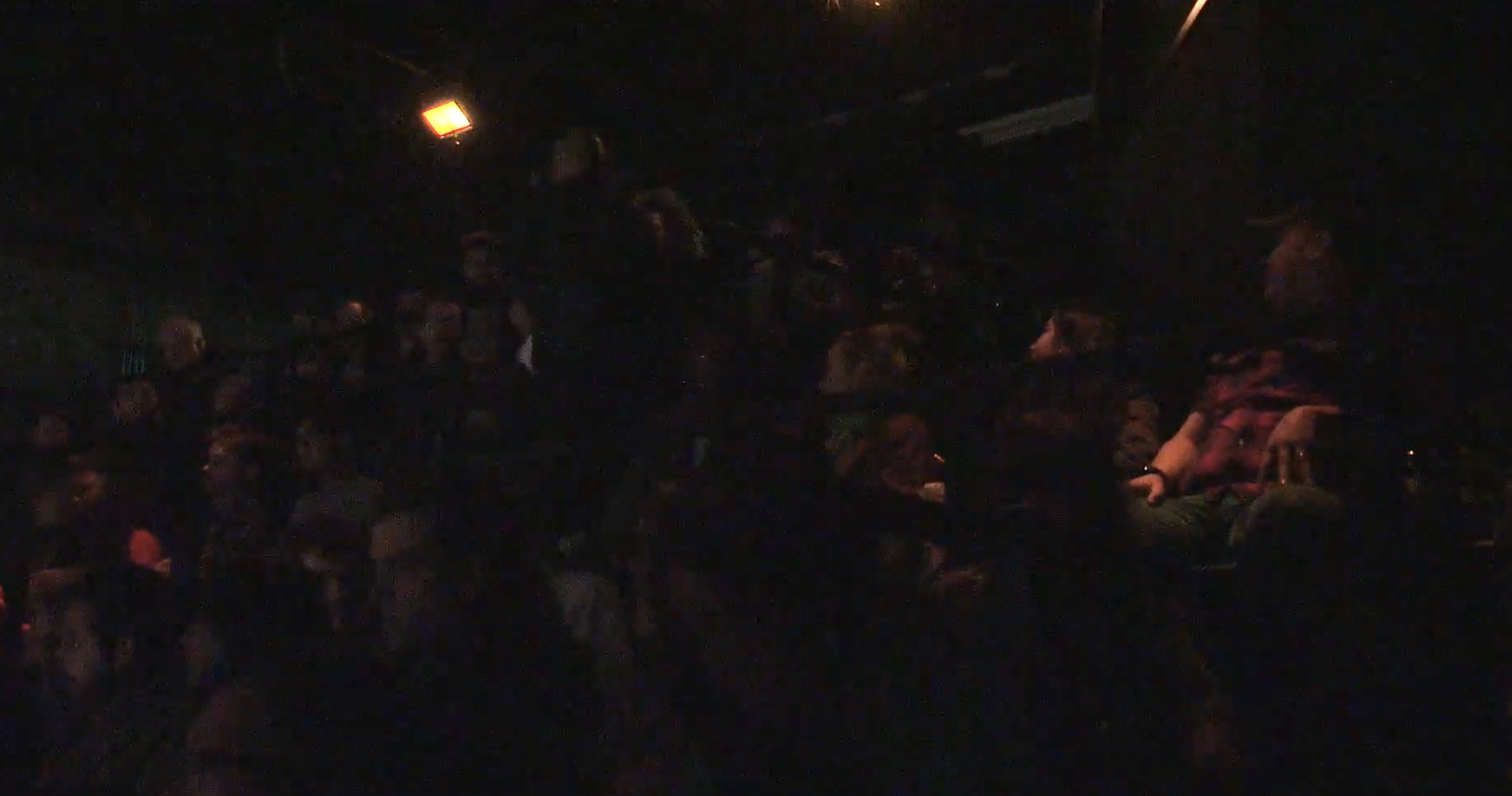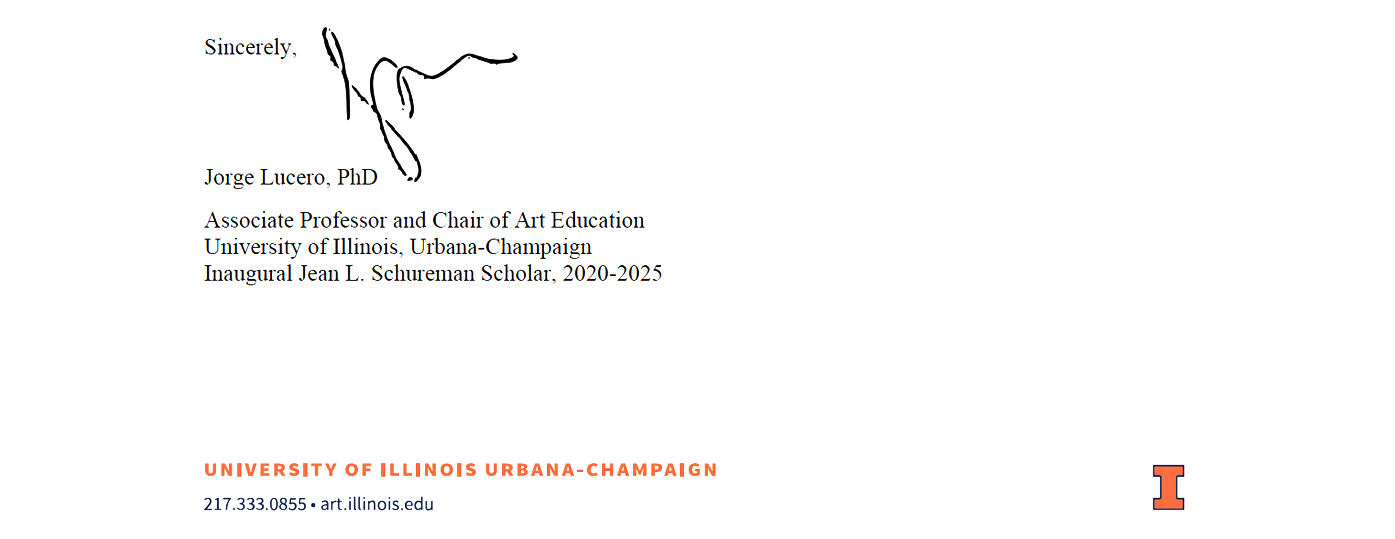Newsletter of Reference
After three years of composing and sharing these newsletters, we at Every house has a door have decided to invite our first guest writer to address our friends and supporters on our behalf on a subject of the guest writer’s choice and to interpret the newsletter form freely. We invited Jorge Lucero, an artist and educator who understands the unending intertwinement of education and creativity, and who fearlessly acts on that understanding with humor and thoughtfulness. We are fortunate to have had him offering us guidance as a Board Member since we began our company in 2008. We remain deeply indebted and grateful to Jorge, whose response to our invitation we offer for you here.
—Matthew Goulish, dramaturg
To Whom It May Concern:
It is the summer of 2023, and over six weeks in July and August I am writing seven letters for seven colleagues who are either applying for different opportunities or aiming to get promoted into new positions in schools. I can’t tell you more about the specific letters, since reference letters have a clumsy confidentiality to them. I do really wish I could share them with those who I’m writing them for. After all, they are love letters. One thing I can say about the letters is that writing them is a kind of divination, that is, making legible something that even in the best-case scenario is still a disparate gathering of scraps, held together mainly by chronology.
As a teacher I’ve had to learn not only the formal construction of these letters, but also how to think about them, because—yes—I want to make them in a way that the letters do what they’re supposed to do, meaning open pathways for the people I’m writing the letters for, but I’m also thinking about them as artworks.
The form of the letter is usually three parts beginning with a justification for why it’s me writing it. Then there’s the testimony, meaning a description of something I’ve witnessed the subject of the letter doing or being. Finally, I present my guess about the future of both the subject of the letter and their work, encouraging the reader to believe me (to have faith in my account). Here I’m not talking about “faith” the way we’ve managed to disempower it as a blind, risky, unintelligent credence of something unproven or unseen. I’m asking for the reader to take my testimony as evidence. To trust that as a person who has spent twenty-five years examining the pliability of school as material and the teacher as creative practitioner, I know—not only what a good version of it looks like—I also have a forecasting sensibility that can understand teacher posture now and hypothesize how that posture will reverberate across time and space if given the chance.
It can’t be helped, but I have taken the invitation as the first Every House Has a Door guest Newsletter contributor to write this letter of reference for two of the most impactful teachers I’ve known in my life, Lin Hixson and Matthew Goulish. Of course, this letter may ultimately only have an audience of two, but I would invite you—dear listener—to hear my testimony and take it as evidence of something that is valuable beyond teaching and art in any of the popular or conventional ways that we understand both of those activities.
What is that I have witnessed?
Well, maybe it can be described flatly as niceness. Still, for this letter I’m going to call it “disinterested generosity”, a phrase I stole from a 1960 tax case argued in front of the Supreme Court where a gift given from “affection, respect, admiration, [and] charity” is described as without interest, meaning not aiming to collect a return on investment. Please notice that “interest” is a phenomenon that occurs solely with the passage of time and that is one of the main things I’m getting at here. This type of giving, particularly in teaching can only be done over long, immeasurable periods of time. It proves itself disinterested only after years, decades—maybe lifetimes—have passed. Over this amount of time what then is revealed is a pedagogy that develops crazy roots. Deep, indestructible, tubers that are so entangled with each other it is impossible to decipher where they begin or end; wildly engendering life, mostly subterraneous in the realm of the unseen, impossible to document in any way that could truly capture it.
You’re not going to see it on the Every house has a door website or Instagram account. You actually won’t even see it on or near Lin and Matthew. The only evidence is us. And not just the ones who have made work with them, who have been in their classes or summer schools; and not only the ones who have read their essays or looked at their manuals or watched their videos or listened to them speak; and more than just the ones who have eaten at their table or ridden in their little car. It’s everyone that every one of us extends disinterested generosity towards, over lifetimes.
It's a broad cast.

In 2013, during the run of Testimonium, Lin Hixson told Coco Picard that early on she learned, “that 90% of directing is casting”. I know what Lin meant, but I’ll take the permission both Goat Island and Every house gave me more than two decades ago and that’s to take anything (everything) however I come to it. So, here I close with the way I hear “90% of directing is casting” because that’s what I’m trying to describe in this entire newsletter of reference. First “directing” is teaching; durational, disinterested teaching. Then casting can be thought of in three ways and here I’m taking a guess, which I’d ask you to have faith about because only some it has happened. There’s the kind of casting that is basically a chance operation, like casting a line in fishing or casting a shadow: These chances, a teacher has to be open to and Lin and Matthew are and will continue to be. And then there’s the kind of casting that is about leading through seeing just a little more than others, like casting a vision: For this one, the leader has to be unafraid of being dismissed as delusional. Lin and Matthew have been courageous enough to risk it and they’re just getting started. And finally, there’s the casting which has to do with replicating like casting multiples out of bronze or porcelain. I’ll speak only for myself here (although I see the traces everywhere), I have no shame in admitting how much I’ve copied, echoed, invoked, and taken from Lin and Matthew. There’s no way, that this will ever stop.
I close by giving Lin and Matthew my highest, wholehearted recommendation. I have zero reservations about their capacity, determination, and—as mentioned before—widespread impact. Please extend to them every imaginable resource and support (financial and otherwise) in their current and future pursuits. You will not regret it.

Artist Jorge Lucero currently serves as Chair of the Art Education Program and as Associate Professor of Art Education in the School of Art & Design at the University of Illinois, Urbana-Champaign. This fall he will assume the role of Associate Dean for Research in the College of Fine and Applied Arts at U of I. Formerly a Chicago Public School teacher, Lucero’s lifelong testing of school’s materiality happens as visible and invisible artworks, writing, and teaching. Recently, he co-edited (with Catalina Hernandez-Cabal) the book What Happens at the Intersection of Conceptual Art & Teaching? (published by the Amsterdam University of the Arts) and he’s currently finishing the manuscript for a forty-interview compendium called Alongside Teacher: Conversations about What, Where, and Who Artists Learn with. In 2023, he was named the National Art Education Association’s Higher Ed Educator of the Year. Lucero is an alum of the School of the Art Institute of Chicago and Penn State University.